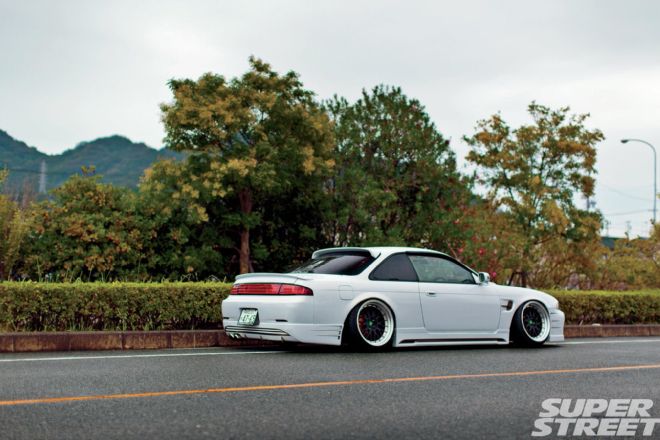For several years, the small island in the Pacific Ocean referred to as Japan has pumped out legendary car after legendary car, fueling automotive fantasies around the world. Manufacturers and small tuning shops continue to build demo cars, many piecing together at least one full build a year. Companies rely heavily on these cars to showcase new products in trade and catalogs shows more so than anywhere else in the world. The use of Photoshop and social media from the Japanese automotive industry isn’t as developed of an idea. When a new product is developed, the only way to ensure exposure would be toWhat happens to the demo cars once their mission is done? Some are kept for further demonstration, some are literally destroyed and crushed into a cube, while others are parked and forgotten. We have seen T&E Vertex’s graveyard personally, an abandoned gravel lot containing far too many familiar cars-projects we’ve seen in print and drawn inspiration from, even a D1 contender or two. The sad the fact is that in Japan, the normal lifespan of cars is far shorter compared to what we’re used to here in the States. The, humid summers and freezing cold winters take their toll on every machine that’s not stored inside as well as in a country where parking space comes with a premium, garages are scarce. A demo car is normally sent to a junkyard being put down and live another life as a soda can, or simply even become part of another car. But occasionally, the fate of a demo car is not limited to these options. Although rare, there are actually instances of a personal party investing in a shop car. Rather to showcase the fabrication skill and styling fortitude of 326 Power, even if this Nissan Silvia was blessed by the existence of a man who recognized its worth-a man who had been not concerned by the fact that he would own a car that was not built by him.
326 power nissan S14 silvia front fascia 01
326 power nissan S14 silvia BBS LM wheels 06
326 power nissan S14 silvia rear view 02
Located in Hiroshima, 326 Power is responsible for some of the most recognized cars in not only Japan but also the world. The owner, Mitsuru Haruguchi, is revered for his styling sense. The cars that leave his shop look almost cartoonish usually fitted with huge aero components that sit millimeters from the ground suspended by enormous wheels and tiny tires. This particular Silvia was a longtime demonstration mule for 326 Power, having made its rounds at car shows, featured in Option and played a part within a rather famous YouTube video. When new owner Masa Ishi purchased the car, there werethe point that his beloved S14 was built by 326 Power and celebrates their styling that matched his taste perfectly. He’s preserved its design that he initially fell in love with, changing only the wheels from Work XD9s to rebuilt BBS LMs. The completefor the immaculate interior.
While Ishi-san’s adoption of the legendary S14 is a rare case in Japan, we are able to easily see where he’s coming from and why he’s left the vehicle unmolested. He found just what he was searching for, as well as this day, this Silvia looks pristine and grabs all the attention since it did if itawesome, they actually have two very different meanings. These two terms are employed to describe a generation of a car. Zenki is used to clarify an earlier period or first generation, while the Kouki is the final period or last generation. This is a very common practice that nerds dubbed tick-tock model. After every tick comes technological improvements and ending with a tock. Think of it as an iPhone. For example, Apple comes out with an iPhone 5. A few months later, it comes by helping cover their an improved version and instead of naming it iPhone 6, the business simply calls it iPhone 5S. A similar can be said about cars. In terms of theProbably the most noticeable distinction between the two is definitely the exterior renovation. The Zenki oval-like headlights were mostly made out of plastic with the exception of its glass corner pieces, as the Kouki headlights were more rectangular and made completely out of glass. With new headlights came a different frontbumper and fenders, and hood. The taillights have an aesthetic upgrade at the same time; the most distinguished are the lines running over the Kouki lights. However, unlike the front changes, the rear taillights are completely interchangeable. Additionally, a few minor changes were made in the engine, including the harness and ECU-Zenki used OBD1 and the Kouki used an OBD2. Inside of the interior, you’ll find the gauge bezels possessed a small change from three full circles plus a Pac-Man shape for the rpm meter. The Kouki, however, had four separate circles for temperature, gas, rpm and speedometer.
While these terms are normally used for the Nissan S-chassis, they are also useful for other cars such as the Toyota AE86s along with the Mazda RX-7 FCs.

